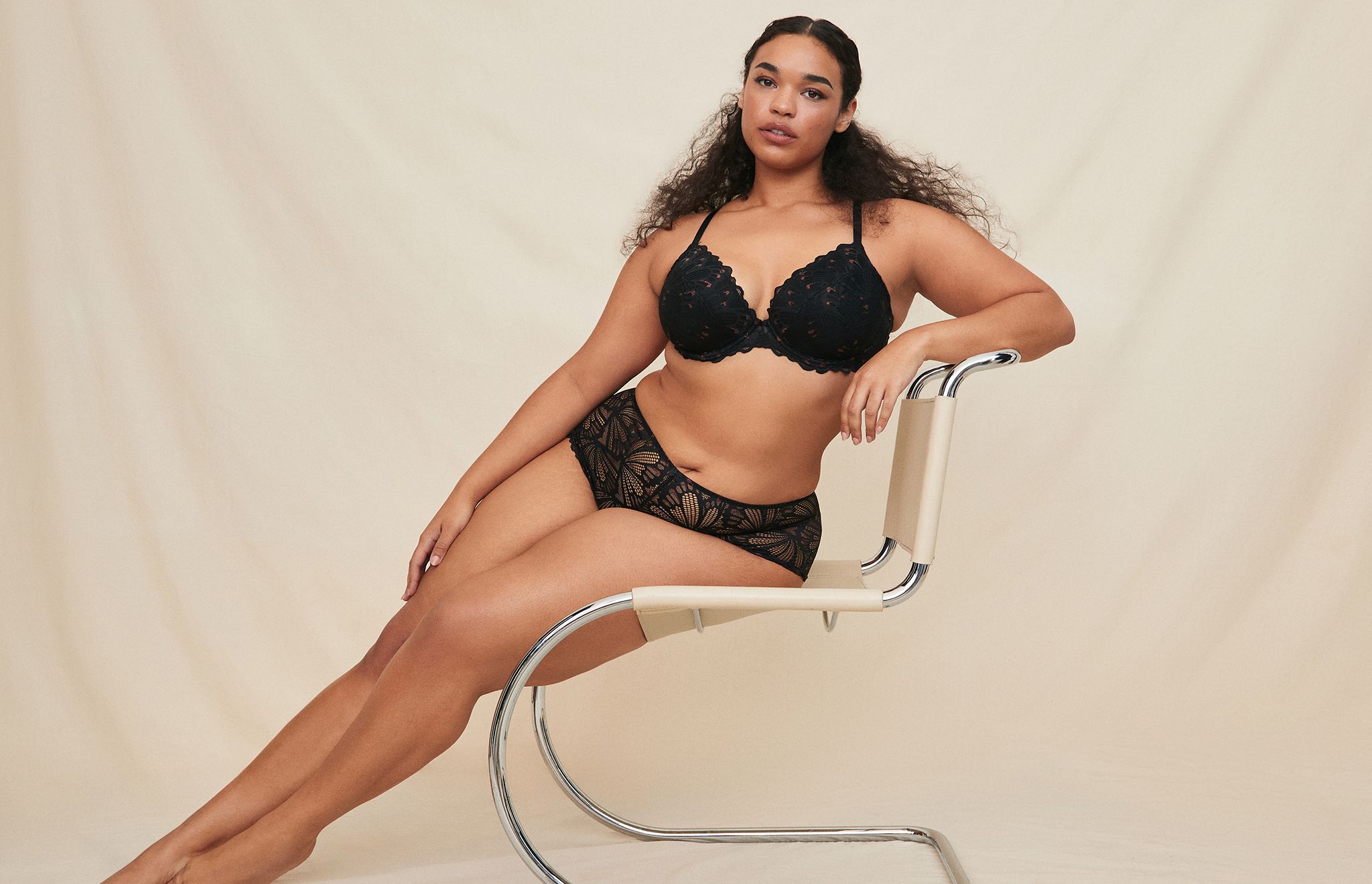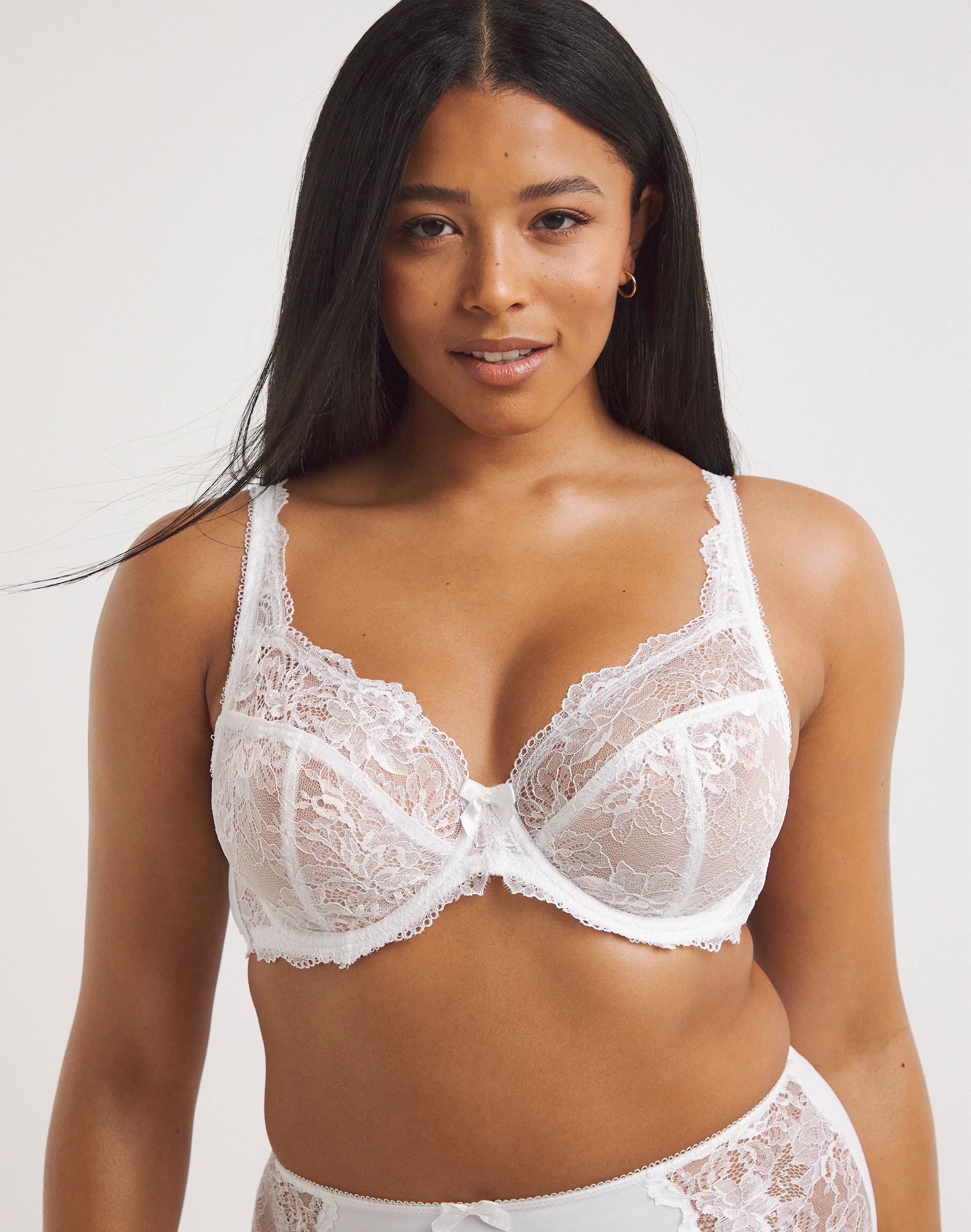
The front:
The underwire sits flat against the chest. Your breasts should be completely secure within the underwire. The cups fit with no spilling out or sitting away from your breasts.
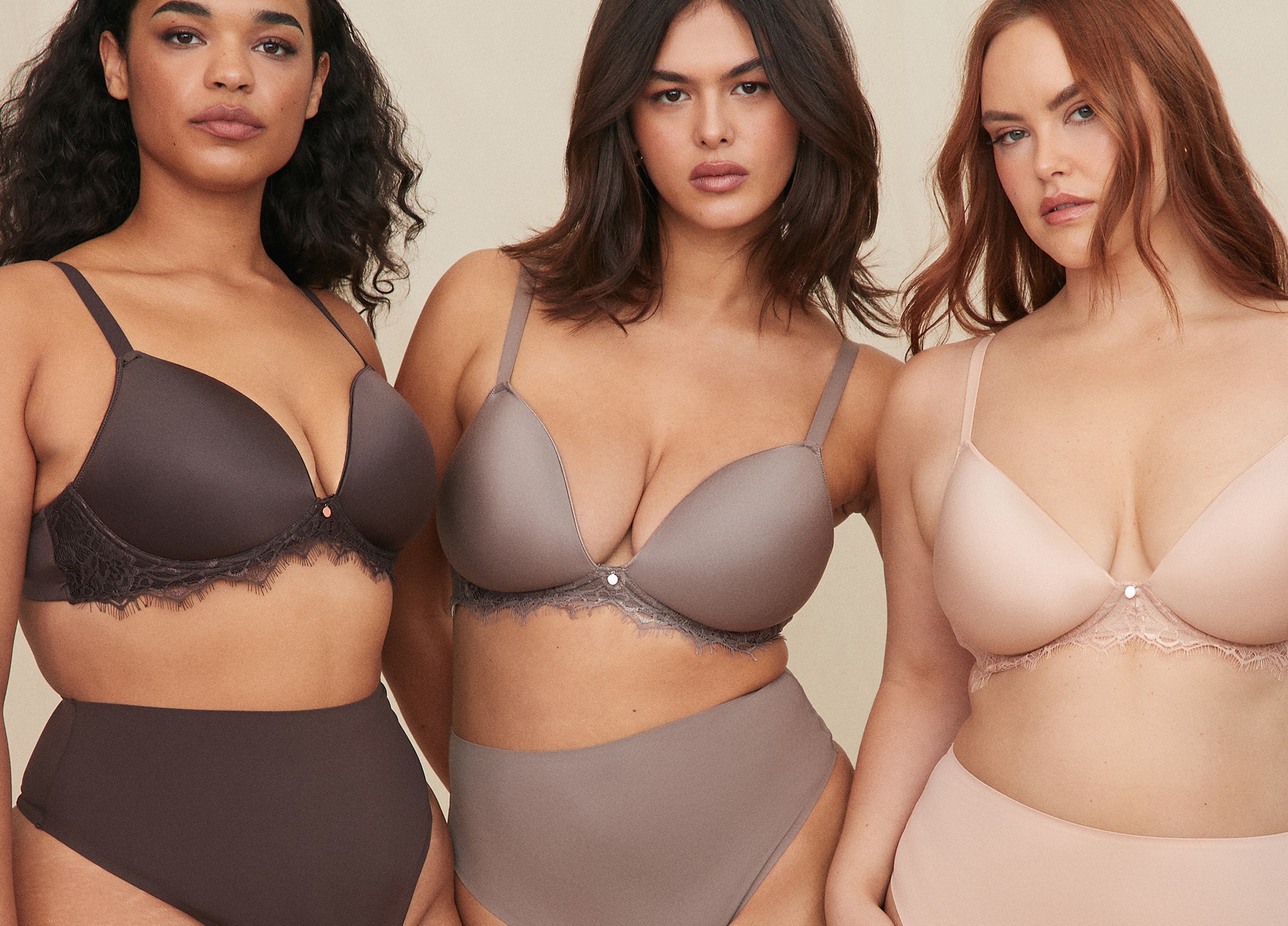
Fit is your foundation to feeling good
Perfect outfits start with perfect lingerie. And perfect lingerie starts with an even more perfect fit. Want to know the correct way to measure your cup and bra size? We’ve got you (and your shape) covered with our bra fitting guide.
Treating yourself to a new lingerie set and want to know how a bra should fit and feel? Or think you’ve been wearing the wrong size? This guide is here to help you achieve a great fit.
CORRECT FITTING BRA
Here’s what a correct fitting bra should look like.

The front:
The underwire sits flat against the chest. Your breasts should be completely secure within the underwire. The cups fit with no spilling out or sitting away from your breasts.
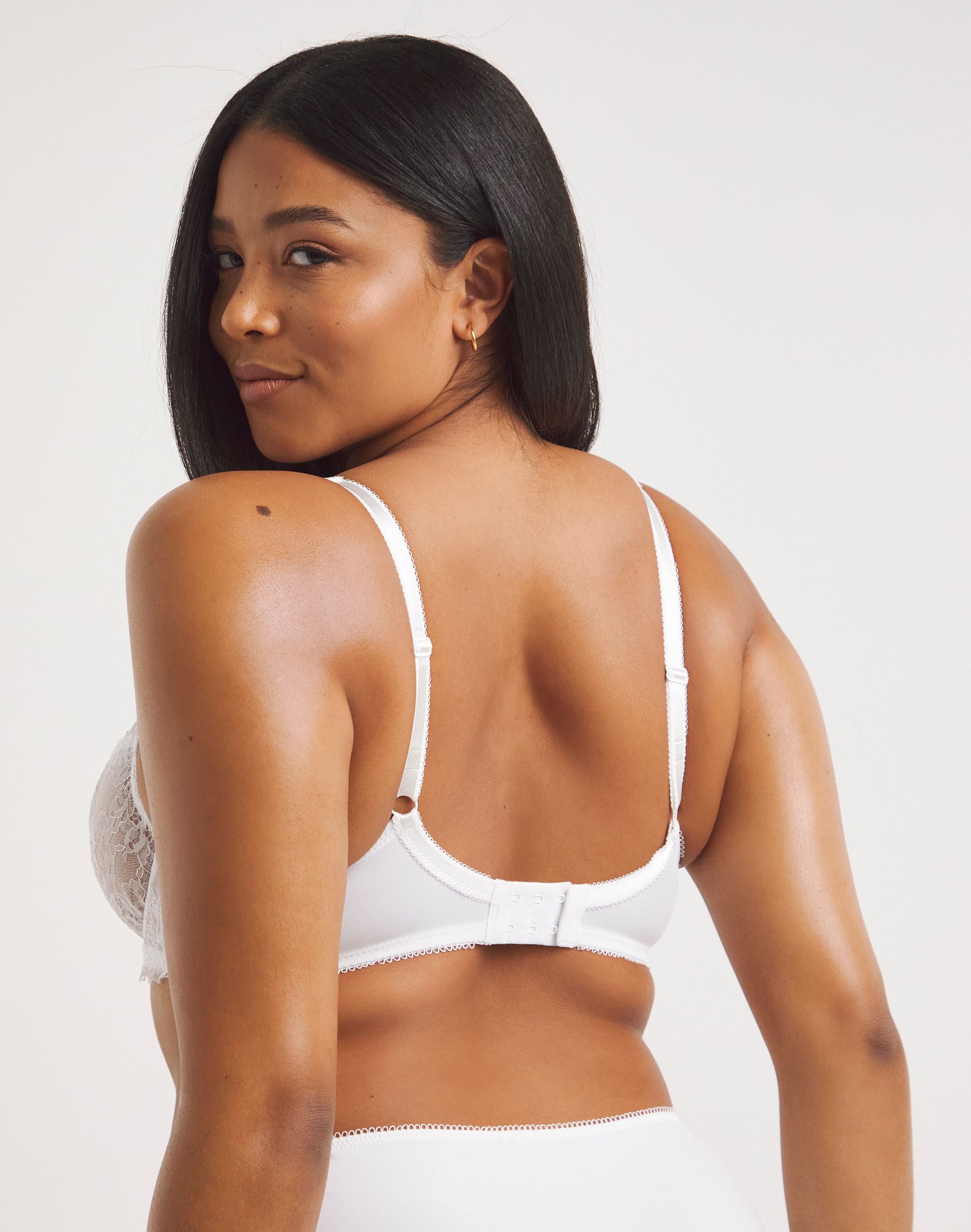
The back:
The straps are parallel or slightly V shaped at the back. The band sits level without riding up at the back. The underband feels comfortably snug. Straps do not dig into the shoulders. Straps sit central on your shoulders.
5 STEPS TO A PERFECT FIT
The secret to a comfortable bra is finding the perfect fit. Boosted confidence? You got it. Improved posture? Yep. Lasts longer? Probably. And these are just some of the benefits of a well-fitted bra. Wondering how should a bra fit? Start with the below…
COMMON BRA FITTING PROBLEMS
(& HOW TO SOLVE THEM)
A well-fitting bra not only feels comfortable, but it can improve your posture and even give you a more defined waist. Here’s some signs you’re wearing the wrong bra, and how to know if your bra fits.
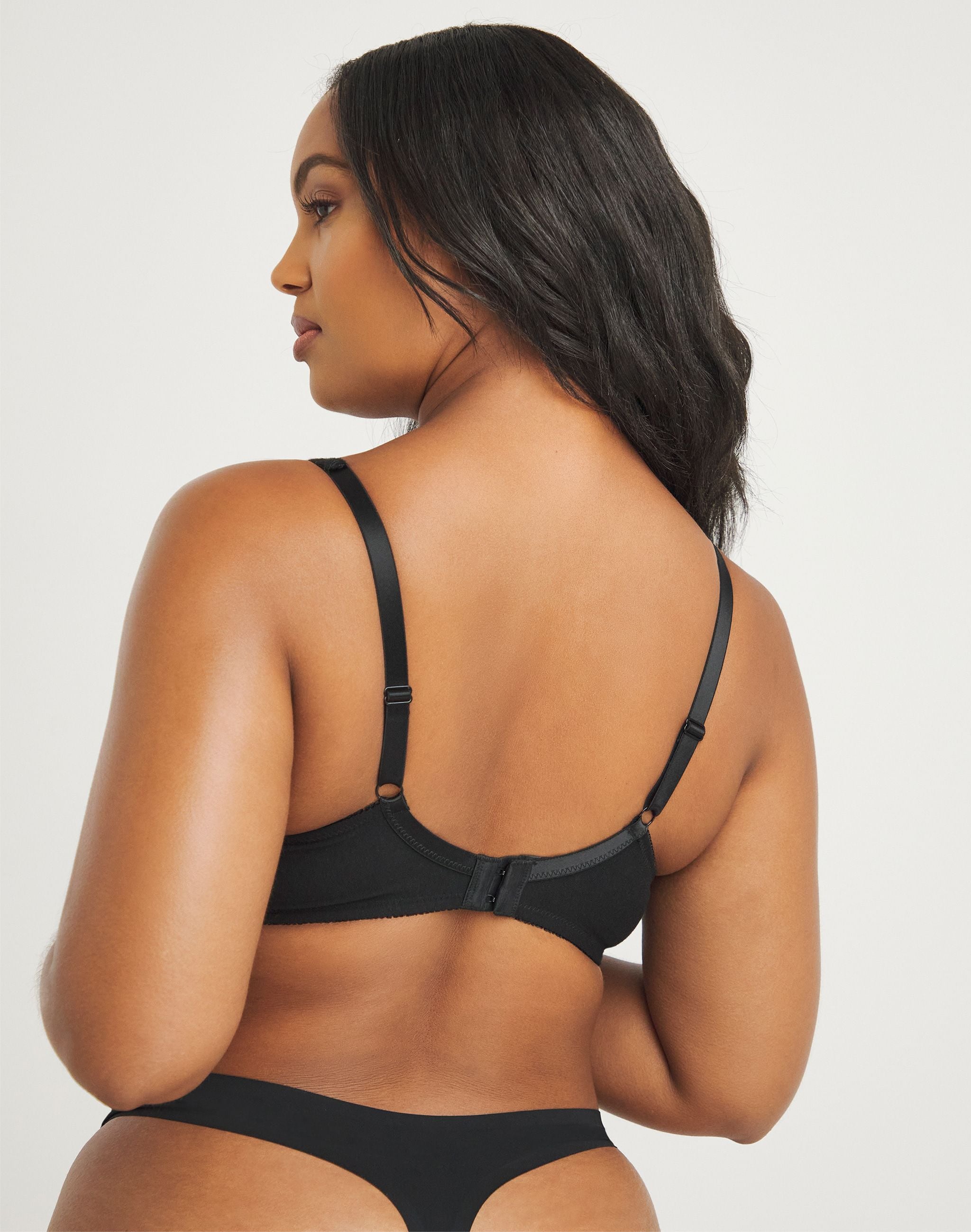
THE UNDERBAND & BACK
A perfectly fitting underband should sit evenly all around your body. The bra should be nice and snug when fastened on the loosest hook and eye.
Bra band feels tight? Try a bigger back size.
Bra straps digging into shoulders? The underband maybe too big, so try a smaller back size for better support.
Rides up? Try a smaller back size; it should be firm but comfortable.
Slipping off? The straps are too long; try shortening them or if not try a different style.
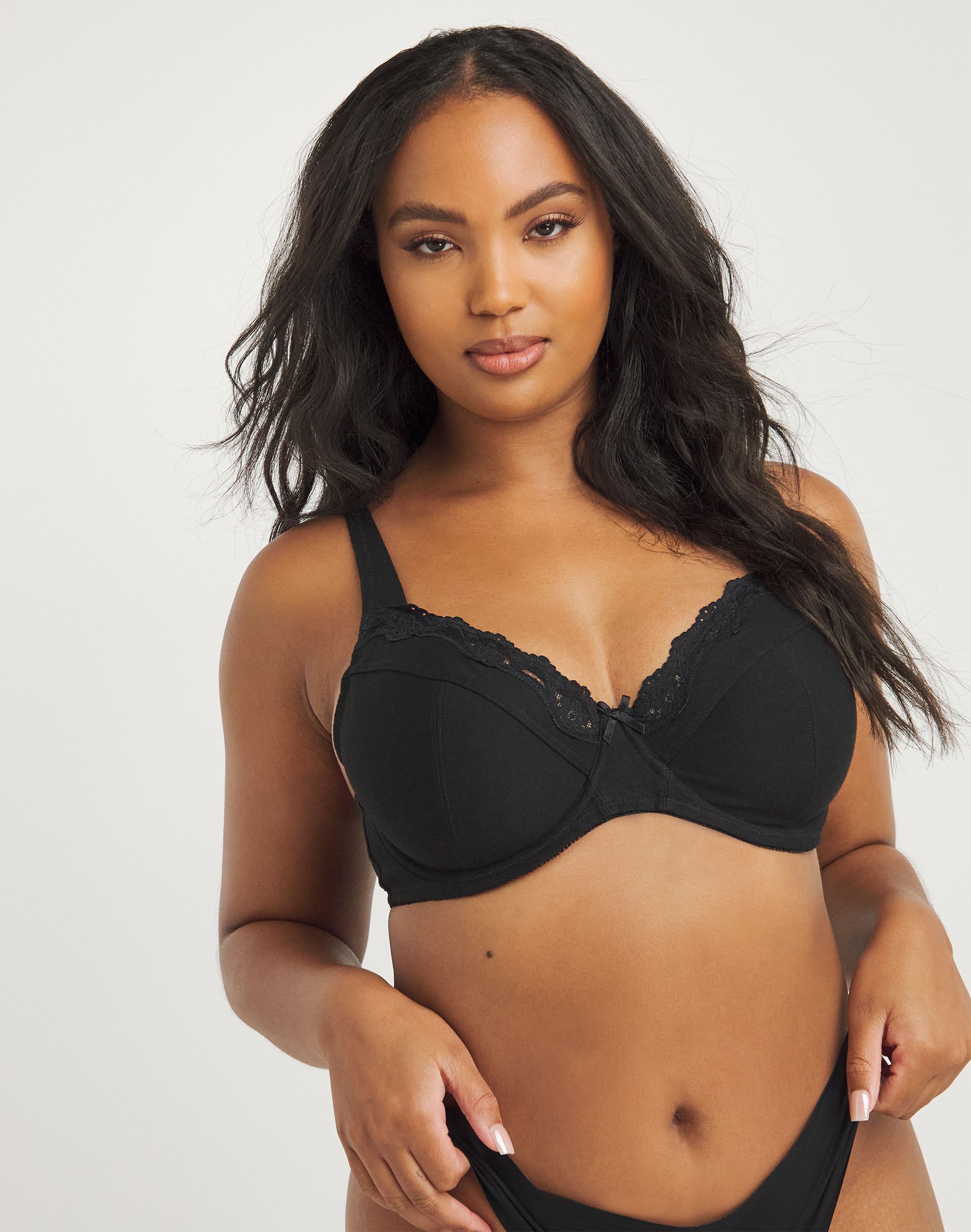
THE CUPS
How should a bra cup fit? There should be no bulging or gaping on the top cups - you’re looking for a nice smooth finish.
Spilling out? Try a bigger cup.
Cups gaping or wrinkling? Try a smaller cup.
Wires lifting away or digging in? Try going up a cup size.
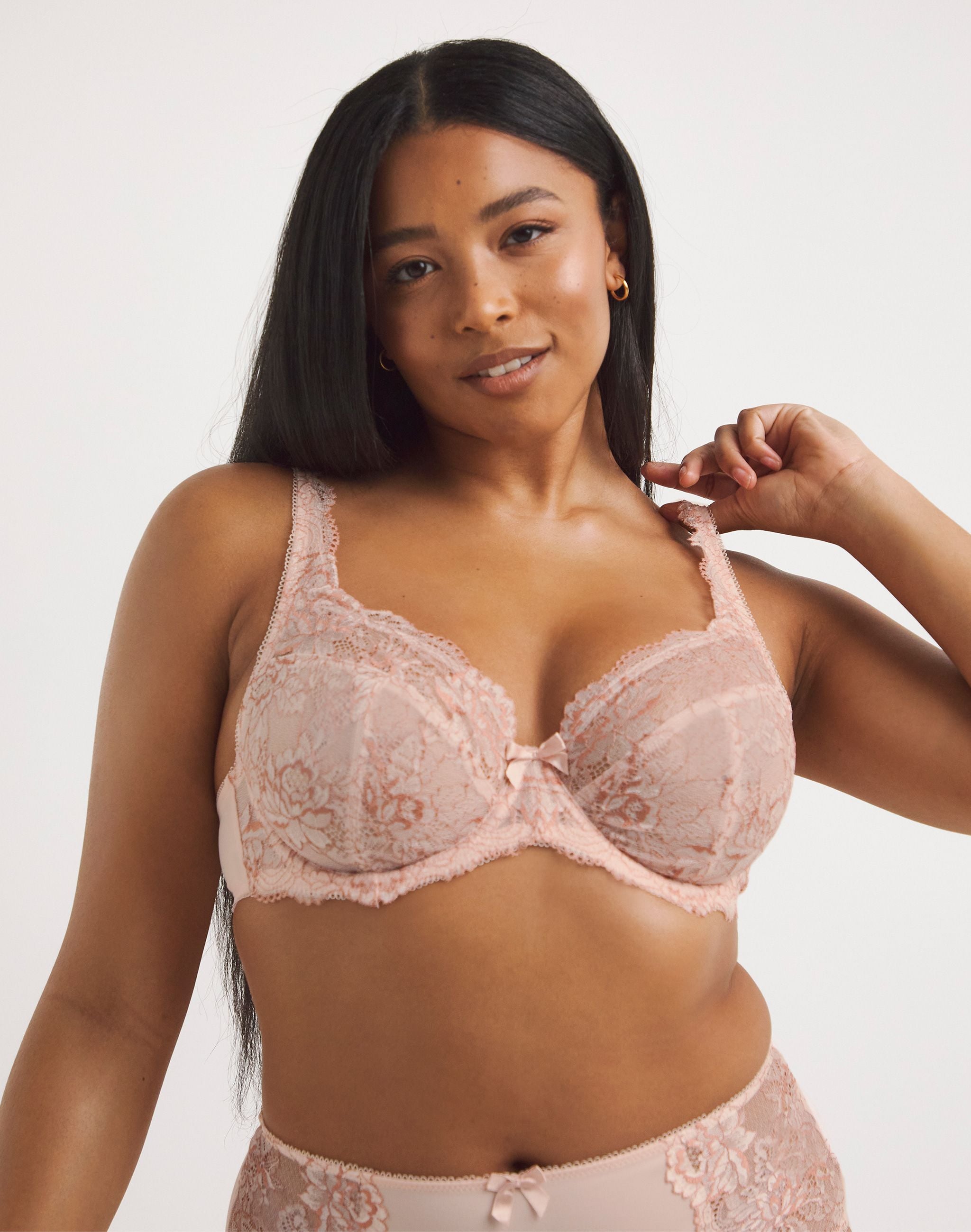
THE STRAPS
Bra straps digging into shoulders? Try going down a back size – the underband (not the straps) should provide 80 percent of the support.
Straps slipping? Try tightening the straps (this might sound obvious but they do loosen over time). Also, if you have narrow shoulders it’s best to avoid balcony styles that have wide set straps.
FIND YOUR PERFECT FIT
In just 60 seconds with True Fit.
Q&A WITH OUR FIT EXPERTS
We asked our Simply Be Fit Experts to give you a little more insight into how you can find the perfect bra fit. You can thank us later.
My specific size is out of stock
Try going down a band size and up a cup size or up a band size and down a cup size. For example, if you are a 34E, try a 32F or a 36DD. This is called sister sizing – the cup volume will be the same for these three sizes.
Why don’t you recommend using a tape measure?
The tape measure system was developed over 80 years ago and body shapes have changed since then… and we now have cup sizes up to a K. Also, you have to be wearing a bra in order to be measured which doesn’t allow for an accurate measurement (especially if you’re wearing the wrong size bra in the first place).
What’s the most common error made in choosing a bra size?
Wearing too big a back band is one of the most common mistakes. Many people confuse the back measurement with breast size, and for example think that a 36 or 38 must be busty. This not only gives poor support and causes bulging necklines and lumps under fitted clothing, but it can also lead to skin irritation and bad posture.
THE LINGERIE HUB
Now you’ve perfected your base, explore our best-selling styles and latest lingerie collections.
